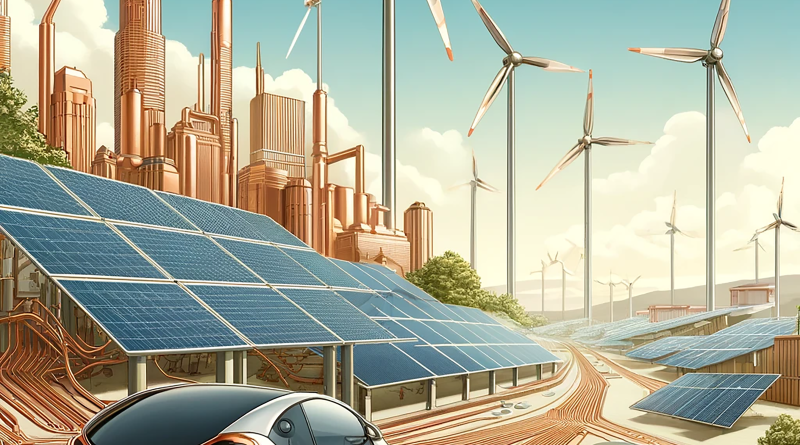Copper’s New Status as a Critical Component
Policy Announcement and Background
The recent declaration by the U.S. Department of Energy (DOE) that copper is now considered a critical material marks a significant policy shift. This addition reflects copper’s indispensable role in modern technology and energy solutions. With this strategic move, the U.S. aligns itself with other global powers like the EU, Japan, India, China, and Canada, all of which have already recognized the metal’s essential role in sustainable development and technological advancement.
Copper’s Central Role in Clean Energy Technologies
Copper, known for its superior electrical conductivity, is pivotal in the manufacture of electric vehicles, solar panels, and wind turbines. As the DOE emphasizes, this transition to include copper on the critical raw materials list is driven by the metal’s growing demand in these sectors. The push reflects a broader initiative to secure the raw materials necessary for a clean energy transition, mitigating future supply risks that could impede technological and energy advancements.
The global consensus on copper’s importance is evident from its inclusion in critical materials lists across major economies. This analysis highlights the strategic role copper plays not only in U.S. policy but in a global context where securing a sustainable and reliable supply chain for copper becomes a shared goal. The comparison with other nations’ lists underscores the international stakes involved in copper supply and the concerted efforts needed to ensure its availability for future technologies.
Impact on U.S. Policy and Industrial Strategy
The designation of copper as a critical material is expected to significantly influence U.S. industrial strategies, particularly in sectors related to clean energy and national defense. It paves the way for initiatives aimed at boosting domestic copper production, enhancing recycling technologies, and fostering innovation in mining and processing practices. The inclusion also makes certain copper-intensive projects eligible for federal tax credits under the Inflation Reduction Act, which aims to stimulate investment in the U.S. clean energy sector.
The economic ramifications of copper’s new status are profound. The DOE’s move signals to markets and industries alike that copper will be a cornerstone of U.S. economic and security strategies moving forward. Industry experts, including those from the Copper Development Association, anticipate that this will double the demand for copper by 2035, primarily driven by the clean energy sector’s needs. This surge in demand highlights the critical nature of copper in maintaining not only economic stability but also national security, given its role in essential infrastructure.
Sources
